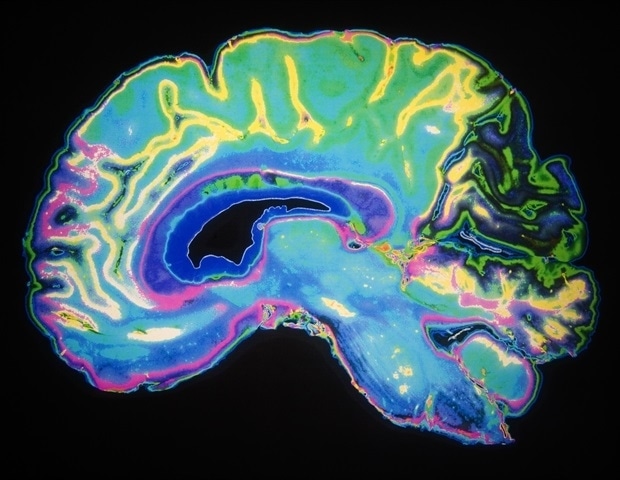Study Sounds Alarm: Zebrafish Reveal Ecological Dangers of Tire Chemicals in Water

Contaminants originating from rubber tyres, specifically N-(1,3-dimethylbutyl)-N'- phenyl-p-phenylenediamine (6PPD) and its oxidised form, 6PPD-quinone (6PPDQ), are causing renewed concern within aquatic environments. Recent investigations indicate that long-term exposure to these substances at concentrations typically found in nature can interfere with fat and sugar processing, induce liver damage, and modify behaviour in zebrafish. This work demonstrates that 6PPD tends to build up mainly in the liver, whereas 6PPDQ has an affinity for the brain. Each compound reduces activity of PPARγ—a crucial controller of bodily functions—and boosts inflammatory agents, leading to persistent harm. Interestingly, 6PPDQ was observed to be more detrimental compared to 6PPD itself, indicating potential increased hazards posed by such transformed molecules. These discoveries highlight an urgent requirement for stricter oversight and monitoring of pollution derived from tyre materials in our environment.
N-(1,3-dimethylbutyl)-N'- phenyl-p-phenylenediamine (6PPD), extensively utilised as an antioxidant in car tyres, significantly helps prevent deterioration of rubber materials subjected to mechanical strain. However, once this chemical enters the ecosystem, it transforms into 6PPD-quinone (6PPDQ)—an agent currently detected universally in urban stormwater discharges and freshwater bodies. Previous investigations have associated both compounds with adverse impacts on development and overall health in water creatures; however, the processes underlying their prolonged repercussions—especially concerning hepatic performance and neurological behaviour—are not well delineated. The zebrafish serve as a robust biological system owing to their close genetic resemblance to humans and appropriateness for examining harmful substances. Considering escalating worries, further exploration into how quickly these chemicals accumulate within living beings over time and their persistent damaging impact specifically on organs became critically important.
A study with DOI: 10.1016/j.ese.2025.100567, released on April 29, 2025, wasublished in Environmental Science and Ecotechnology Researchers from South China Agricultural University and their colleagues explained how substances derived from tires affect liver and nervous system functions in zebrafish. Through the use of toxicokinetic analysis, transcriptome profiling, and molecular interaction tests, they contrasted the effects of 6PPD and 6PPDQ. The study showed that although 6PPD concentrates more in liver tissues, 6PPDQ causes greater harm to livers. This research underscores different toxicity mechanisms and indicates possible hazards may not be limited to just fish but could also pose risks to humans and other organisms encountering tire-related contaminants in water systems.
During regulated three-month trials, zebrafish exhibited distinct variations in tissue build-up and physical harm. The compound 6PPD predominantly accumulated in the liver, while 6PPDQ amassed mainly in the brain. Exposure to both substances led to stunted growth and altered swimming patterns, along with observable irregularities within their livers including fat deposition and cellular deterioration. Tests indicated heightened concentrations of biomarkers indicative of hepatic distress (such as alanine transaminase, aspartate transaminase, and alkaline phosphatase) and signs of oxidative tension (like malondialdehyde and free radicals), coupled with reduced activity of protective antioxidants like superoxide dismutase and glutathione peroxidase. Gene expression studies highlighted extensive disturbances across various biochemical processes, particularly those linked to lipid formation, glucose metabolism, and cholesterol management. Both agents inhibited Peroxisome Proliferator-Activated Receptor Gamma (PPARγ) function and spurred higher production of pro-inflammatory molecules TNF-α and IL-6; notably, 6PPDQ demonstrated more potent interaction with PPARγ according to computational models and surface plasmon resonance analyses. Collectively, these impacts resemble early stages of non-alcoholic fatty liver disorder, thereby sparking significant environmental and health concerns.
The research uncovers an unseen danger from contaminants originating from rubber found in urban drainage systems. The evidence shows that minimal yet prolonged contact with 6PPD and its transformed compound can significantly impair liver function and alter behaviour in water organisms. Importantly, the derivative substance known as 6PPDQ proves more harmful compared to its original form, underscoring important considerations for oversight measures and strategies aimed at reducing contamination.
Dr. Liangfu Wei, who authored the study seniorly
Dr. Wei stressed the importance of having environmental risk assessments encompass both original substances and their resulting transformation products within regulatory reviews.
These outcomes provide essential information for managing environmental risks and shaping regulatory policies. By identifying disruptions to PPARγ activity and metabolism, we gain insight into how chronic toxicity can be monitored at a molecular level. Distinguishing between the harmful effects of 6PPD and 6PPDQ underscores the necessity of evaluating all related chemicals when assessing hazards. This research calls for improved controls over urban runoffs as well as sophisticated water purification technologies to reduce contamination levels in water bodies. Considering that metabolic processes are similar among different species, this study also brings attention to potential human health issues linked with prolonged contact with pollutants from tires via tainted water supplies.
Chinese Society for Environmental Science
Jiao, F., et al. (2025). Mechanisms of Chronic Toxicity Induced by 6PPD and 6PPD-Quinone in Zebrafish. Environmental Science and Ecotechnology . doi.org/10.1016/j.ese.2025.100567 .

Posting Komentar untuk "Study Sounds Alarm: Zebrafish Reveal Ecological Dangers of Tire Chemicals in Water"
Please Leave a wise comment, Thank you